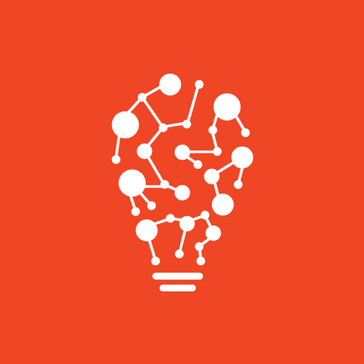Best Image Recognition Software
Best Image Recognition Software At A Glance
G2 takes pride in showing unbiased reviews on user satisfaction in our ratings and reports. We do not allow paid placements in any of our ratings, rankings, or reports. Learn about our scoring methodologies.
- Overview
- Pros and Cons
- User Satisfaction
- Seller Details
Detect and classify multiple objects, images, and more using Google Cloud's pre-trained Vision API or custom trained Vision AutoML. Google Cloud's Vision AI helps developers easily leverage the power
- Software Engineer
- Information Technology and Services
- Computer Software
- 51% Small-Business
- 25% Enterprise
32,685,307 Twitter followers
- Overview
- Pros and Cons
- User Satisfaction
- Seller Details
Derive insights from your images in the cloud or at the edge with AutoML Vision or use pre-trained Vision API models to detect emotion, understand text, and more.
- 67% Small-Business
- 27% Enterprise
32,685,307 Twitter followers
- Overview
- Pros and Cons
- User Satisfaction
- Seller Details
Amazon Rekognition makes it easy to add image and video analysis to your applications. It can identify the objects, people, text, scenes, and activities, or any inappropriate content from an image or
- Information Technology and Services
- 39% Small-Business
- 32% Enterprise
2,231,724 Twitter followers
- Overview
- Pros and Cons
- User Satisfaction
- Seller Details
SmartClick is a full-service software provider delivering Artificial Intelligence and Machine Learning solutions for Enterprises.
- 67% Small-Business
- 20% Enterprise
- Overview
- Pros and Cons
- User Satisfaction
- Seller Details
NIST FRVT Top Ranked Face Recognition, iBeta 2 Certified Liveness Detection Engine on Mobile. MiniAiLive is a provider of Touchless Biometrics Authentication, ID verification solutions. We offer stron
- 92% Small-Business
- 8% Mid-Market
21 Twitter followers
- Overview
- Pros and Cons
- User Satisfaction
- Seller Details
Advanced Facial Search and Recognition API. Luxand.Cloud stands at the forefront of facial recognition technology, crafting a future where security seamlessly intertwines with innovation. With preci
- 90% Mid-Market
- 10% Small-Business
- Overview
- Pros and Cons
- User Satisfaction
- Seller Details
Gesture Recognition Toolkit (GRT) is a cross-platform, open-source, C++ machine learning library designed for real-time gesture recognition.
- 60% Small-Business
- 20% Mid-Market
- Overview
- Pros and Cons
- User Satisfaction
- Seller Details
Build AI applications responsibly with Azure AI Content Safety Azure AI Content Safety is a safety system for monitoring content generated by both foundation models and humans. Detect and block potent
- 45% Small-Business
- 45% Enterprise
14,047,075 Twitter followers
- Overview
- Pros and Cons
- User Satisfaction
- Seller Details
Syte is the world’s first product discovery platform. Powered by visual AI, we’re spearheading the evolution of eCommerce by enabling brands and retailers to seamlessly connect shoppers with products
- Retail
- Apparel & Fashion
- 41% Enterprise
- 38% Mid-Market
714 Twitter followers
- Overview
- Pros and Cons
- User Satisfaction
- Seller Details
Clarifai is a leader in AI orchestration and development, helping organizations, teams, and developers build, deploy, orchestrate, and operationalize AI at scale. Clarifai’s cutting-edge AI workflow o
- Computer Software
- Information Technology and Services
- 59% Small-Business
- 27% Mid-Market
10,966 Twitter followers
- Overview
- Pros and Cons
- User Satisfaction
- Seller Details
Dataloop is a cutting-edge AI Development Platform that's transforming the way organizations build AI applications. Our platform is meticulously crafted to cater to developers at the heart of the AI d
- Computer Software
- Information Technology and Services
- 39% Mid-Market
- 32% Small-Business
- Overview
- Pros and Cons
- User Satisfaction
- Seller Details
Nyckel makes it easy to auto-label images and text using AI. We say ‘easy’ because trying to do classification through complex “we-do-it-all” AI/ML tools is hard. Especially if you’re not a machine le
- 36% Enterprise
- 36% Small-Business
82 Twitter followers
- Overview
- Pros and Cons
- User Satisfaction
- Seller Details
NoahFace provides highly configurable software solutions that transform iPads and smartphones into the most flexible, scalable, and dependable clocking platform on earth. Fast, reliable, and accurate,
- 50% Mid-Market
- 45% Small-Business
7 Twitter followers
- Overview
- User Satisfaction
- Seller Details
Azure Custom Vision Service is a tool for building custom image classifiers, and for making them better over time. This service enables you to identify your own objects and things in images.
- 50% Mid-Market
- 33% Small-Business
14,047,075 Twitter followers
- Overview
- Pros and Cons
- User Satisfaction
- Seller Details
Roboflow has everything you need to build and deploy computer vision applications. Over 1,000,000 users from businesses of every size — from startups to public companies — use the company's end-to-
- 80% Small-Business
- 10% Enterprise
Learn More About Image Recognition Software
What is About Image Recognition Software?
Image recognition software, also known as computer vision software, gives users the ability to input images and receive data back in the form of a label. This process, done through machine learning (ML), enables end users to gain an understanding of images which they might not be able to do with their naked eye. Since videos are fundamentally composed of a series of images, image recognition software can also be used to analyze video feeds.
The possible uses for this technology are broad and varied. For example, health care professionals can use it to assess if a tumor is malignant or benign. In addition, automotive companies can use image recognition software to further the development of self-driving cars, as image recognition allows the car to “see" by providing labels for what the camera on the car captures. Another popular use case is image search, where users can take a picture of an object and receive search results as a result. Retailers can use this as an alternative to text search. Finally, facial recognition software utilizes image recognition: The algorithm takes a face as an input and produces information as an output.
Key Benefits of Image Recognition Software
- Empower users to gain understanding of images through labeling
- Give end users an opportunity to make meaning out of image data
- Create smarter applications with computer vision capabilities
Why Use Image Recognition Software?
Business applications with image recognition functionality provide end users with the tools they need to succeed. For example, if a retail company wants to build a smarter search function or a medical institution seeks to supercharge their disease detecting abilities, image recognition algorithms or software can come to the rescue.
Engaged users — Incorporating image recognition into applications results in higher productivity for end users, since they can make meaning of the images within the application they use.
Better applications — Users spend more time using applications when they are enhanced with image recognition capabilities, leading to enhanced productivity and better deployment of the applications.
Cut costs — Building out a robust image recognition function can be a costly endeavor and could take a significant amount of time. While this software might require additional development work in the long run, it helps businesses save money and develop insights.
Who Uses Image Recognition Software?
Images are just pixels. As a result, with the advancement of AI techniques like deep learning, we are able to grasp the meaning behind these pixels through advanced computer vision techniques. Thanks to the aforementioned technology, image analysis and image-based insights are open to many. However, there are still specific positions that utilize this software more than others.
Software developers — Developers that want to create the next generation of products and services can use image recognition software to build computer vision capabilities into their applications, including object recognition, facial recognition, image search, and more .
Marketers — Image recognition solutions can provide insights into images for marketers looking to understand the impact and reach of their brand. For example, a marketing professional can use the technology to detect and track their logo across social media platforms.
Health care professionals — As the health care industry becomes more digital and image recognition techniques gain traction in the industry, it will be easier for doctors to quickly identify and diagnose maladies to support quick, accurate clinical decision-making.
Retailers— Image search is the new text search. As a result, smart retailers are building applications with search powered by image recognition to give end users a more powerful search experience.
Kinds of Image Recognition Software
By using image recognition software, users can better understand images—unlocking the meaning contained within them. As a result, they can make important business decisions, create better applications, and improve functionality of existing tools.
Image restoration — Uses machine learning to improve the quality of images through techniques such as improving focus and reducing blur.
Object recognition — Allows for the recognition of objects or object classes for either pre-specified or learned objects.
Scene reconstruction — Given images of a scene, or a video, scene reconstruction computes a 3D model of a scene.
Motion analysis — Processes video, or image sequences, to track objects or individuals.
Image Recognition Software Features
Image recognition software tends to have a wide range of features, including image labeling, text detection, and more. These features help end users understand their images better and unlock insights. The following features are found in many image recognition software offerings.
Image labeling — Image recognition software allows users to identify objects in an image and can help provide labels for these detected objects. More robust solutions allow users to create custom labels, letting them tailor the labels to their particular industry or use case. By training the machine learning model on data, the software can accurately detect objects based on these inputted labels.
Text detection — Many image recognition tools recognize text and can translate it into a machine readable format.
Facial recognition — Takes an image of a face and provides the identity of the individual as an output.
Inappropriate content detection — Allows images and videos to be moderated by identifying potentially inappropriate or unsafe content.
Other features of image recognition software include: APIs & SDKs, Machine Learning Libraries & Frameworks, On Device & Edge, Operations, Platform, Retail, and Security.
Potential Issues with Image Recognition Software
Plan for adoption — At the start, image recognition tools may not seem valuable to all employees—end users might struggle to adopt the solutions. Therefore, it’s important for companies to have a plan in place to encourage and promote user adoption.
Time to market — As with any software implementation, it’s important to think about how long it will take to implement. It’s important to consider related software that a company might need, such as data integration software.
Data security — Don’t make data security an afterthought. Companies must consider security options to ensure the correct users see the correct data. They must also have security options that allow administrators to assign verified users different levels of access to the platform.
Image manipulation — The rise of advanced computer vision algorithms has seen an increased risk of advanced image manipulation such as deepfakes. Using techniques such as Generative Adversarial Networks, bad actors can create lifelike videos and images, that are almost indistinguishable from the real thing.







